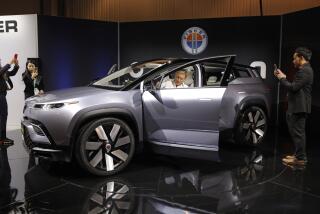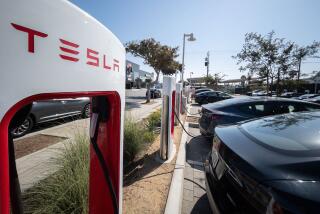Good News, Bad News
HIS nickname is M.K., but you can call him Johnny Drama.
On Monday, Chung Mong-koo — the imperious, quality-obsessed chairman of Hyundai-Kia Automotive Group, who in seven years transformed the sleepy South Korean company into an automaking powerhouse — admitted being involved in an embezzlement scheme that, according to prosecutors, funneled $136 million to a political slush fund. Chung was arrested April 28 after a monthlong investigation and has been in jail ever since.
Appearing in court in a wheelchair, the 68-year-old told the judge he was suffering from high blood pressure and dizziness. Thus the drama.
For those who follow such things, Chung’s arrest is a stunning reversal of fortune, part Shakespeare, part Enron. The salient difference between Chung and smartest-guy-in-the-room Ken Lay is that Chung actually built something of value.
The intrigues are complicated, but the narrative goes like this: After wresting control of the company from his cousin in 1999, Chung — son of founder Chung Ju-yung — vowed to make Hyundai (with its subsidiary Kia) one of the top five automakers in the world by 2010. No small hubris, that.
His weapon of choice: quality. Taking a wrecking ball to long-established hierarchies and departmental fiefdoms, Chung forced designers, engineers, accountants and production staff to work together to correct quality problems before they happened. A fanatical micromanager, Chung oversaw the smallest details of product development and was known to go wild-weasel on executives who displeased him.
Meanwhile, Chung ordered billions spent on research and development and placed new operations around the world like so many pieces on a global-domination game board — including a $60-million test facility in the Mojave Desert and a $1.2-billion factory in Alabama.
In the U.S. market, where Hyundai’s image had taken a drubbing, the company offered a headline-grabbing 10-year powertrain warranty to lure wary consumers. Another facet of the American market strategy was to pile on as standard costly features that other companies offer as price-added options. Also, the product mix has gradually come into alignment with American tastes. The introduction last year of the Sonata — built in Alabama — challenges segment monsters Honda Accord and Toyota Camry. The company offers two fresh and right-sized SUVs, the Sante Fe and the Tucson, and is in the midst of a complete overhaul of the product portfolio.
Sales in the U.S. are up more than 400% since 1998 (455,012 in 2005). Worldwide, Hyundai is now the sixth largest car company — larger than Nissan, Honda and PSA/Peugeot-Citroen.
And now, the very month that Chung is standing in the dock, the results of his grand strategy are being felt to full effect: In the profit-rich American market, the just-announced J.D. Power Initial Quality Survey has Hyundai ranked third overall, behind Porsche and Lexus, and first among “non-premium” nameplates, ahead of Honda and Toyota. All that history, that progress, that drama, seems neatly summarized in the 2006 Hyundai Azera, the replacement for the full-size GX350 and the company’s upstart competitor to the Buick LaCrosse and Toyota Avalon. Near-luxury large car, they call the segment.
Built in South Korea on an extended version of the Sonata platform, the refined and lubricious Azera is handsomely styled, vast on the inside and meticulously constructed. It is also packed with deal-tipping standard features such as electronic stability control, eight air bags, alloy wheels, powered rear window sunshade, and a rorty 3.8-liter, 263-hp V6 with a five-speed automatic transmission. Our test car, with the Limited package, included a power sunroof, power foot pedals, an Infinity stereo system with six-disc in-dash changer, and rain-sensing wipers.
The whole thing goes out the dealership doors for $29,415, an off-the-back-of-the-truck price that gives the Hyundai, I must say, the slightest sweet reek of corruption. At that price you just know somebody, somewhere has a knife in his back.
It certainly looks expensive. The Azera (called the Grandeur in Asian markets) has something of the new Camry’s haute-bourgeois styling, with its broad, conservative form limned in chrome accents and banded with crystalline headlight and taillight treatments. It comes ever so close to being a dull shape, saved at the last minute by the gentle swells over the rear quarter panels. At 192.7 inches it’s actually shorter than some of its competitors (Ford 500, LaCrosse, Avalon), but the back seat area is quite large. The trunk, 16.6 cubic feet, is bigger than those of its competitors except for the Ford 500.
Under the beveled hood is the smooth, purling V6 with variable valve-timing heads and overhead cams, from which 255 pound-feet of torque are sluiced through a five-speed automatic. What’s notable here is not the car’s off-the-line performance — though the front wheels pull the 3,629-pounder to 60 mph in an outstanding 6.1 seconds — but the tenor of it all. The powertrain, carefully isolated from the chassis, has the creamy thrum we have come to associate with Lexus and Infiniti.
Meanwhile, cabin noise from other sources — wind, tire noise — approaches that of the whispering Buick Lucerne. This is a very serene cabin and this is important. Just about any manufacturer can cut their margins on subsystems purchased from suppliers (rain-sensing wipers, for instance), but engineering noise-vibration-harshness (NVH) out of a car, well, that’s expensive.
There is one exception, however. Whenever the car crossed rough pavement or railroad tracks, there was a disconcerting booming sound coming from the rear multi-link suspension. I would wish for more isolation between the body and the heavy, oscillating parts of the suspension.
Actually, the Azera reminds me in lots of ways of Lexus and Infiniti cars of a few years ago. For example, the quality of leather and the look of the glossy faux wood wrapped around the cabin, on the steering wheel and gearshift (this may be the best fake-tree trim I’ve seen in a car). The stippled aluminum finish on the gearshift console is very like an Infiniti. The Azera Limited has the same electroluminescent dials that dazzled us in Lexus only a few years ago. As Stravinsky said, good composers borrow, great composers steal.
The single, disappointing omission is the fact that the Limited isn’t available with a navigation system. Somehow, amid the leather and wood-esque surfaces, the interior seems unfinished.
Whatever malfeasance he committed, Chung told the judge at a hearing June 1, he did because he was obsessed with building his company into something great. He might have cut ethical corners, in other words, but only to take the long way ‘round toward quality.
As a mea culpa in the car business, that gains my sympathy. One of the ironies of Chung’s being busted is that Hyundai’s success, the industrial pride of South Korea, might not have been possible without the creative efficiencies of the chaebol system, which refers to the interlocking family-business oligarchies. The Korean government has good reason to want to take down the chaebol oligarchs but doesn’t want to throw a wrench in the Korean economy.
It leaves open the question: Can you sell a car as good as the Azera honestly?
Automotive critic Dan Neil can be reached at dan.neil@latimes.com.
*
2006 Hyundai Azera Limited
Base price: $26,835
Price, as tested: $29,415
Powertrain: 3.8-liter, DOHC, 24-valve V6 with variable valve timing; five-speed automatic with manual shift mode; front wheel drive
Horsepower: 263 at 6,000 rpm
Torque: 255 pound-feet at 4,500 rpm
Curb weight: 3,629 pounds
0-60 mph: 6.1 seconds
Wheelbase: 109.4 inches
Overall length: 192.7 inches
EPA fuel economy: 19 miles per gallon city, 28 mpg highway
Final thoughts: Smooth, powerful and well built. Nevermind how.






